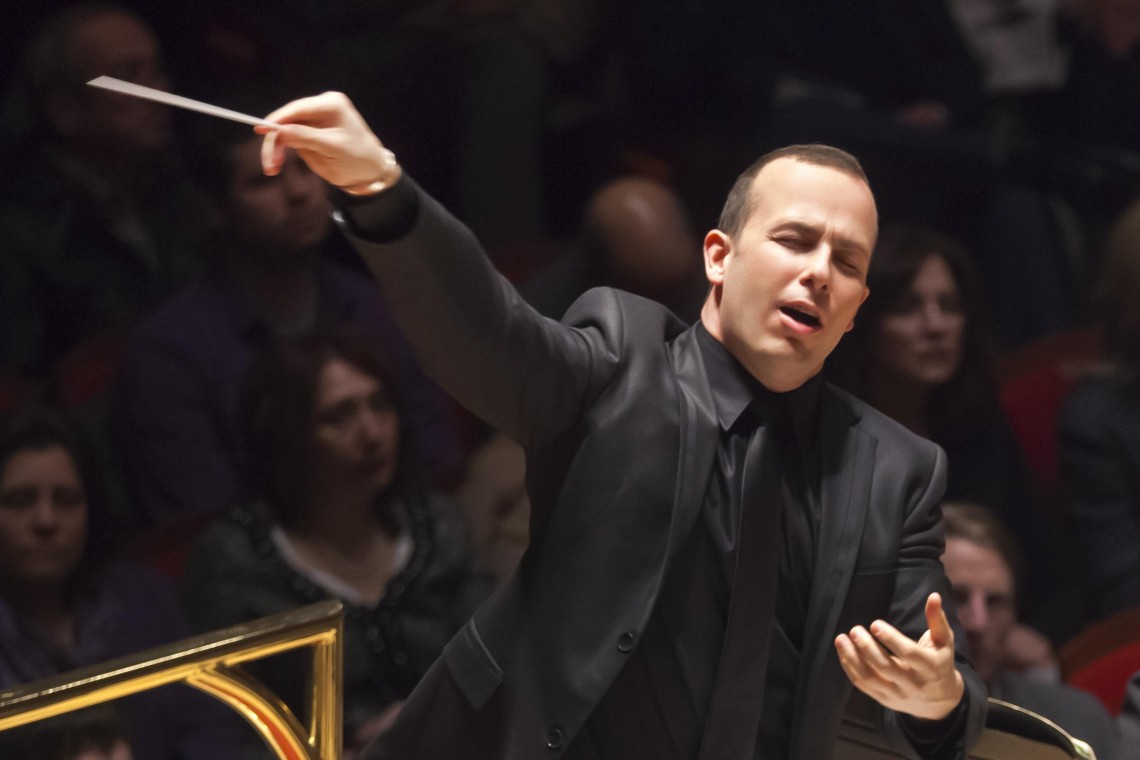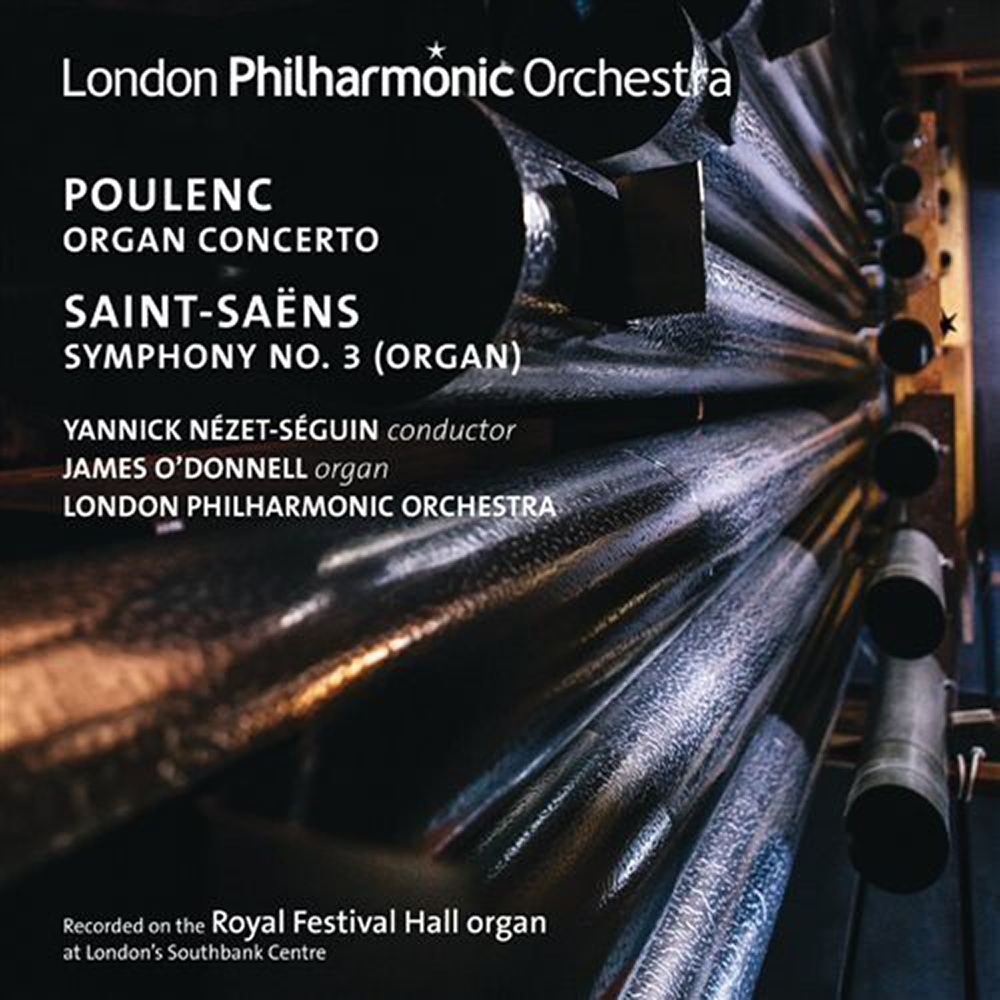Poulenc: Concerto in G minor for Organ, Strings and Timpani. Saint-Saëns: Symphony No. 3 in C minor “Organ”. James O’Donnell, organ. London Philharmonic Orchestra/Yannick Nézet-Sèguin. Recorded live in the Royal Festival Hall, London, March 26, 2014. LPO – 0081 (Total Time: 58:05)
These performances were recorded live during the Pull Out All the Stops Festival launching the refurbished Royal Festival Hall organ, fully operational again for the first time since 2005. The organ sounds terrific and the performances are first-rate.
The Royal Festival Hall opened in 1951, but a controversy had already been raging for some years about the kind of organ that should be put in it. Distinguished organist, Ralph William Downes, a member of a group inspired by Albert Schweitzer that wanted to go back to a true baroque sound, as opposed to the sound made by many of the big, romantic instruments of the late Nineteenth and early Twentieth Centuries, was chosen to design the instrument. Downes had luminaries such as Britten and Beecham on his side, but the opposition also had some stature, with Ralph Vaughan Williams and Sir Malcolm Sargent leading the charge. A compromise of sorts was worked out and Harrison & Harrison was hired to build the new instrument. The Royal Festival Hall organ was called the first ‘neo-classical’ British organ and a product of the Organ Reform Movement.
The new organ was inaugurated March 24, 1954 and was generally admired. The problem was that the Festival Hall itself was regularly lambasted for its dry acoustics. After decades of negative comments, a major reconstruction of the hall and its adjacent spaces was undertaken between 2005-2007. The acoustical improvements dictated that changes must be made to the housing of the organ and its 7,866 pipes; details of these changes are given in the booklet accompanying this CD. For photos and commentary on the refurbished organ see here.

Getting the right balance is extremely difficult when recording a symphony orchestra and an organ together. In 2007, the Poulenc and the Saint-Saëns pieces were recorded together by organist Olivier Latry, with Christoph Eschenbach conducting the Philadelphia Orchestra (Ondine ODE 1094-5). The performances are very good, but the organ all but obliterates the orchestra, especially in the Poulenc. In this new recording, while the balances are much better, the overall sound is far from perfect; the strings have been recorded close-up, making for an excessively dry sound, compared to the strings of the Philadelphia Orchestra.
That said, the London Philharmonic plays with fire and passion under Nèzet-Sèguin. And what about the refurbished organ? The powerful opening chords of the Poulenc are thrilling and have great clarity. In the quiet mysterious passages of the concerto, the sound is as beautiful as one could wish. In my experience, large concert organs tend to turn complicated music to mush, but that is not the case here. Of course, it is impossible to tell from a CD whether this is the way the organ really sounds in the hall or whether the sound we hear is the work of recording engineers. In any case, the Royal Festival Hall organ is now up and running again and this new disc provides worthy documentation of its induction.
- SCRUTINY | TSO Lets Berlioz Do The Talking In Season Opener - September 21, 2018
- RECORD KEEPING | Even Yannick Nézet-Séguin Can’t Make Us Love Mozart’s La Clemenza di Tito - September 6, 2018
- RECORD KEEPING | Giovanna d’Arco With Anna Netrebko Explains Why The Best Operas Survive - August 30, 2018




